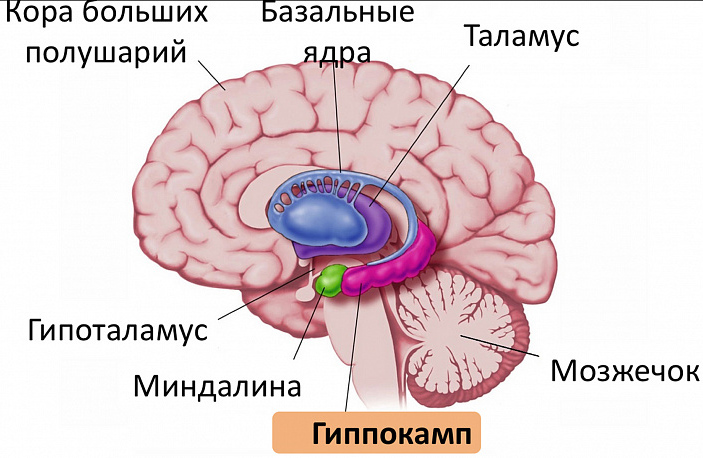Content
GThe hippocampus is a part of the limbic system of the brain, which is involved in the mechanisms of emotion formation, memory consolidation (that is, the transition of short-term memory to long-term memory), spatial memory, thanks to which navigation is possible. Generates a theta rhythm while holding attention.
The scientific community knows that the human hippocampus exhibits structural differences between meditators and non-meditators, and between men and women. Meditation-specific features of the hippocampus, including its connective fibers, have been investigated by American scientists using various imaging techniques such as magnetic resonance imaging (MRI) and diffusion tensor imaging (DTT). The results of these studies indicate a larger hippocampus in meditators, a greater amount of gray matter in the hippocampus, and a higher conductivity of hippocampal fibers.

The aforementioned effects of meditation and sex differences in the hippocampus raise the question of whether hippocampal-specific meditation effects manifest differently in the male and female brains. The researchers conducted an experiment that mirrored high-resolution magnetic resonance imaging data from 30 meditation practitioners (15 men / 15 women) and 30 control people (who do not practice meditation) with the same male to female ratio. They tested for significant group interactions and then mapped the effects of meditation on men and women separately.
Study participants who met the inclusion criteria were invited to the University of California Los Angeles (UCLA) campus. The maximum allowable age difference between matched pairs was 2 years; in general, the age ranged from 24 to 64 years, with the average age of meditators being 47.3 years, and for controls – 47.3 years. In the group of meditators, the total practice duration ranged from 5 to 46 years with an average practice duration of 20.2 years. All participants (meditators / controls) were examined on the same CT scanner.

Before analyzing the hippocampus, the researchers decided to find out if the brain volume differs between meditating / non-meditating men and meditating / non-meditating women. For this purpose, the amount of gray and white matter was measured, as well as cerebrospinal fluid, which is constantly circulating in the brain. It turned out that meditating and non-meditating men showed no significant differences in total brain volume (mean ± standard deviation: 1514.02 ± 111.96 versus 1514.93 ± 111.12 cc). The situation was the same in both groups of female participants (1378.03 ± 112.49 versus 1360.08 ± 99.13 cc).
results
The volumes of the left and right hippocampus were, on average, greater in meditating men than in the control group of men; they were also higher in meditating women compared with women in the control group. When conducting comparative studies separately for men and women, the volumes of the left hippocampus were significantly higher in meditating men than in control men, and also in meditating women than in control women. Significant effects of meditation on the volume of the right hippocampus were not found in either men or women.
In addition, the practice of meditation in men and women influenced laterality (interhemispheric asymmetry). Such gender differences may be related to genetic or acquired differences between male and female brains in areas that benefit from meditation practice and / or suggest that male and female hippocampus perceive mindfulness practices differently. Perhaps men and women meditators may use / need different amounts of practice or specific elements of it to achieve the same results. Despite this, the researchers argue that biological sex, as well as specific experience, seem to play an integral role not only in the activation of hippocampal functions, but also in the formation of the structure of the hippocampus, including its adult neurogenesis (a multi-stage process of formation of new nerve cells in mature central nervous system); at the moment, given the cross-cutting nature of the study, certain conclusions about the causality of the observed inter-sex interactions and gender group differences, according to scientists, are not justified.
A source:
frontiersin.org/articles/10.3389/fpsyg.2015.00186/full
Department of Neurology, Medical School. David Geffen, University of California at Los Angeles, Los Angeles, California, USA
Center for Tomography, Institute of Neuroimaging and Computer Science, Keck School of Medicine, University of Southern California, Los Angeles, California, USA




